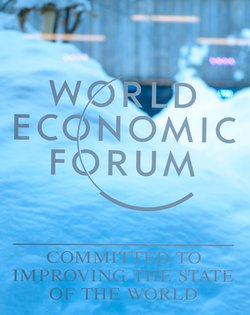Incoming Statistics - Duck, Duck, Duck!
Tuesday, 14 April 2020By Sam Whimster
We are being bombarded with statistics, wave-like attacks. The debt statistics of the great financial crash starting in 2008, then the awakening interest in inequality, and now the dreadful stats of Covid-19, which are instigating another wave of debt and expenditure statistics.

If statistics could put the world to rights, allowing what Condorcet called "the sweet despotism of reason", then happiness would triumph over misery.
Goethe wrote during his erleichternde travels in Italy:
"By statistical is meant in Germany an inquiry for ascertaining the political strength of a country, or for questions concerning matters of state: whereas the idea I annexed to the term is an inquiry into the state of a country, for the purpose ascertaining the quantum of happiness enjoyed by its inhabitants and the means of its future improvements".
Faith in the power of statistics and its flipside, ignoring them until sheer urgency compels attention, is worth the consideration of a few non-statistical lines. Mary Douglas, the cultural anthropologist, warned - or rather simply observed - that modern societies lack adequate symbolic representations of danger.
In tribal societies rituals of purity and taboos are developed to contain and parlay with ever-present danger. In her collection of essays Risk and Blame (1994) Douglas wrote that "moderns follow a line of reasoning from effects back to material causes" and "primitives a line from misfortune to spiritual beings". We fall back on statistics - and talismanic handwashing. She also noted that risk and blame travel together.

President Trump's blaming China and the W.H.O. is breath-takingly blatant. But within the statistical community itself attribution of responsibility for mis-analysis is, as I write, in full swing.
As a sociologist I am happy to go along with "material cause" crowd (though in era-time it will kill us unless we develop a symbolic representation of the anthropocene). Durkheim in Le Suicide: ėtude de sociologie (1897) established the societal forces at work that determined the quantum of suicides - that most individual of acts - in any given society. His investigation was dependent on mortality statistics and recorded deaths, and his explanation was rooted in a new sociology.
That theory - in brief - divided social bonds along two axes: one was egoism and altruism, the other anomie and fatalism. Different sorts of societies, say Catholic, Protestant, Shia, atheist, can be placed within this orthogonal space and the suicide rate explained. Falling into poverty does not raise the suicide rate (because of resilient upbringing), acquiring unimaginable wealth does raise the rate. It creates a sense of anomie, normlessness, and the duly unhinged march to their death through the drug of their new found choice. As an update, the imposed and discretionary austerity in the 21st century does kill.

Durkheim was a sociologist not a statistician. Ian Hacking in his inestimable book The Taming of Chance (1990) tracks the irresistible rise of statistics in the 18th and 19th centuries and the implicit and explicit understanding of society that accompanied the enumeration of people and what Hacking termed 'making up people'. Statistics created social categories. Durkheim created the idea of symbolic representation through which society is created. These are two separate yet overlapping approaches. I am old enough to remember primary school admonitions on the dangers of poliomyelitis. The teacher put the fear of god into us about dirty hands. This was not a statistic, a propensity to contract a disease. It was an injunction, a taboo, propagandised by the new post-war institution of public health.
Without social categories and a mindful representation of society, statistics no longer bite on our vacant conscience. This is a particular problem for the economics of inequality. Thomas Piketty and colleagues are its most assiduous trackers. The statistics reveal a pattern and that pattern shows the rich becoming richer and those at the bottom receiving less and less. The pattern is fractal. It can be broken down into ever smaller categories of percentiles, more revealing than the gross measure of the Gini-coefficient. In empiricising inequality, which in the wider scheme of things is the societal constant of stratification, inequality becomes an output.

It is this empiricist cast that helps to explain how in Capital in the Twenty-First Century (2014) Piketty has stormed the Anglophone world: not airy theory but sheer facts. His study also comes with a a simple and stark policy solution. Tax property, tax wealth and tax income. Restore the social wage and restore the graded hierarchy of property and home-ownership as an achievable lifestyle. But this has not happened, even though the arch priest of finance capital, Jamie Dimon, has told governments to adopt this strategy. Appealing to the sustainability of the capitalist model of society does not cut it.
Piketty displays an obvious passion for statistics and in this he is sustained by some noble traditions. Faith in statistics marked its foundation. Thomas Bayes was a non-conformist minister, in the Puritan tradition. God's omniscient creation of ‘the all’ did not make sense, unless held to through blind faith. The eighteenth century inquirers realised that using our senses was required in understanding the world. Irregularities and chance could be explained, so lessening the capriciousness of God's design. Chance could be tamed, and the aristocratic habit of indulging in risky activities marginalised. Through a formula, Bayes theorem, assumed likelihoods could be updated according to changes in related phenomena. The unexpected was susceptible to intelligent interpretation.

Condorcet believed in secular enlightenment and the power of human reason. Karl Pearson wrote of him that he was "the first writer who had a philosophy of science [statistics], and indicated that our belief in the stability of statistical ratios is precisely the same as our belief in so called natural laws." (Quoted in Hacking, p.40). Condorcet placed his "social arithmetic" within the curriculum of the moral sciences - not how to be moral but what habits and conventions (les mœurs) moulded society and produced its regularities. The first statistical studies discovered that mortality, sickness, homicide and suicide moved in regular and observable ways. This was the science of society.
Adolphe Quetelet introduced the new concept "the normal" to social phenomena. The normal was affixed as a label to the Gaussian distribution of measurable attributes and their distribution. The normal mutated into the norm, to which the average person should orient his and her behaviour. By 1850 the average man was taken to be typical of a population and race, almost a real person. Hence today we still speak of the average family with 2.4 children despite the blatant injustice towards the majority of non-typical families. The church's good and evil was replaced by the normal and abnormal. Again today, the single parent family is abnormal, isn't it? With the normal and the abnormal came the deviance statistics of the criminal, the mad, and the suicide. The crimogenetic and suicidogenetic represented the deviant, and as Durkheim observed, keeps us all in line with the mean. The idea of the abnormal - itself a neutral and colourless standard deviation - became a normative quality essential to creating a sense of society.

The grand rhetoric of Piketty's statistical tables appeals to our supposed sense of a normal distribution of wealth. The average wage earner in 2010 - underpaid and underhoused - can look back over the decades to a time when the either his younger self or parents did earn a living wage. But this appeal to social justice is countered by the satisfaction of the rich, who grow richer over the same period. It is not a quiet satisfaction, it is voluble in terms of Randian conservatism and the atomisation of macro-economic concerns by rational expectations theory. The social representation of inequality is a construction in which more than one party can engage; moreover the richer party can and do mobilize their political spokespeople more effectively.
Piketty's Capital in the Twenty First Century has an explicit echo to Marx's Das Kapital. Kritik der politischen Oekonomie of 1867. Statistics occupied much of Marx's time. How much income accrued to the owners of capital and how much came to worker in wages. Marx compartmentalised the working day into those hours that fulfilled enough payment for the workers' basic needs and those hours dedicated to the profits of the owners. This produced a ratio, the rate of exploitation. Piketty also produced his key ratio, the ratio of income as a flow to capital as a stock. How many years of national output would it take to equal the stock of capital. Not long if the capital has been destroyed by war, decimated by plague, or deflated through depression; and absolutely forever when capital as wealth is inflated through ‘financial innovation’.
To reprise Pearson, are these ratios the natural laws of capitalism? Ones that threaten our sense of the normal so that with inner logic exposed we are forced into action? For Piketty the response is a global cadastral register to tax wealth wherever it resides, and for Marx the revolution of the dispossessed. Ever since Eduard Bernstein's revision of revolutionary Marxism in 1899 (Evolutionary Socialism: A Criticism and Affirmation, tr. 1909) it is accepted, even by Bernie Sanders, that revolutionary upheaval is not going to happen. As to redistribution through taxation, it's a challenge that has yet to be actuated. Also, is it a welfare measure or one that stops the resistible rise of rentierism in its tracks?
We still await the re-discovery of society.